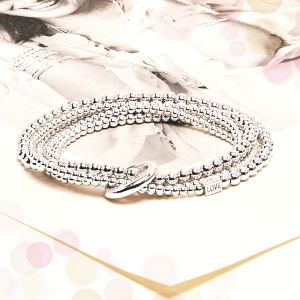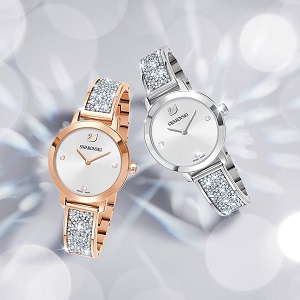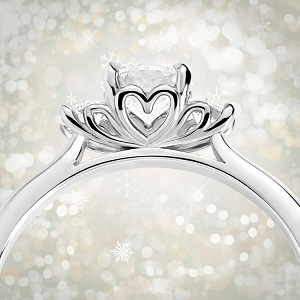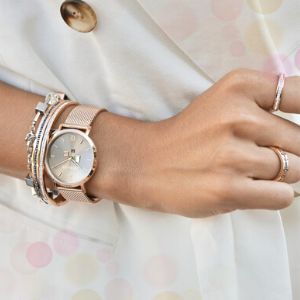20% Blue Light Card discount on full priced items
- Free UK delivery for orders over £25
- Complimentary packaging & gift message
- Express delivery £6.95
Watch Guide
A watch is not only functional, but can be the perfect addition to any outfit that can either complete your accessorised look, or stand alone as a stylish statement. When purchasing a new watch, there are a number design factors to consider. Understanding the range of different materials, functions and watch movement types available will help you make the right choice. Shop our range of ladies' and men's watches here or read on for more information!

Materials
A watch can feature a number of different materials as part of its design - the case, band, strap, crystal and movement may all be made from various materials. The materials used are a key design element of a watch and can completely change its look and feel, durability and performance of the watch. However, it's worth remembering that watch fashion does change, and some of us change our watches regularly or have several watches on hand to go with different outfits. Where the watch is not intended to be a family heirloom, value and appearance may be the key considerations!
The crystal - this refers to the clear cover over the watch face, protecting the interior from dirt, scratches and other damage - typically made from glass or plastic. The most affordable material used for this cover is acrylic. As a light and inexpensive hard plastic, it is often used in sports watches since it doesn't shatter or crack. However, it can scratch easily compared to some other materials. Mineral glass is made by treating regular glass and is more scratch-resistant than acrylic, but can crack or shatter under extreme conditions. In most luxury watches, the cover of choice is sapphire crystal, a synthetic material with the properties of natural colourless sapphire. It is favoured by high-end watch manufacturers because of it's scratch resistance - only a diamond or another sapphire can scratch its surface! However, sapphire crystal does shatter more easily than acrylic and therefore shouldn't be treated as though indestructible for the purposes of sports and other high impact activities.
The case - The key function of the case is to protect the inner workings of a watch, so they are often made from hard-wearing metals such as stainless steel or titanium. Gold and platinum are also popular choices and set the standard for luxury mens and womens watches. Ceramic (particularly white ceramic) has also become a favourite for women's watches thanks to its unique look. Plastic watches can often achieve a similar look at an affordable price.
The watch band - The band attaches the watch to the wrist and can be either a bracelet or a strap. The band material is another consideration when choosing the watch for you.
Bracelet bands are usually made of interlocking links which can be added or removed to resize it to the wrist. These are often, but not always, made in the same material as the case. Another bracelet type is the metal mesh style or 'Milanese' which use metal wires, usually stainless steel, to knit a robust and flexible band. These stylish bracelets are usually made using top quality 304 stainless steel, making them extremely strong. Milanese bracelet watches have been very fashionable for the past few years.
Watch straps can be made from a number of different materials such as leather, fabric, rubber or plastic. These are easily adjusted to the wrist by changing the position of the buckle, just like a belt. Sports watches often have a strap which is made from rubber or nylon as this is hardwearing and well-suited to outdoor conditions. Fashion watches are sometimes sold with more than one strap which can be changed to compliment a particular outfit or straps can be purchased separately so wearers can personalise their watch according to their own style or current trends.
Functions
Basic functions of a watch include second hands, day, date, and alarm. Developments in technology have allowed wrist watches to become more advanced in terms of their functionality. Functions such as chronographs, water resistance, and other specific functions.
Chronograph - a chronograph is a watch that can be used as a stopwatch as well as for keeping time, which is ideal if you enjoy training, running or going to the gym. Chronograph watches feature a second hand with a flyback function which returns the second hand to zero, so you can quickly start timing again. Some chronographs have split timing. This is when a chronograph has two second hands - the main second hand and an additional one. Both hands move together, but the wearer can stop one of them whilst the other hand continues around the clock face. This is perfect for marking lap times or milestones on a route while you are training. Both will feature a flyback function to return them to zero.
Water resistance - this refers to the ability of the watch to withstand splashes of water to varying degrees. You have to be mindful when using a water resistant watch that the resistance is only an indication of how waterproof it is because water resistance is tested in still or static conditions. For example, if you are swimming with a watch, the movement of your arms will alter the pressure that the watch is under. Likewise, if you use your watch in a hot tub, sauna, bath or shower, the heat could cause the seals to expand and compromise the water resistance, making the watch less water resistant or even causing it to malfunction.
Movement types
As with other watch characteristics, there are different watch movement types to consider.
Mechanical watch movements
Wind up - a more traditional watch wearer might enjoy the contact that comes with winding up their watch. However, you do have to remember to wind your watch up and even when doing so they can gain or lose up to 10 seconds per day. Hand-wound watches store energy in reserve so you can take it off but typically not for more than a day or two.
Automatic - an automatic watch is a mechanical watch that automatically winds the watch in response to the movement of the wearers arm. That is, the wearer's movement winds the watch up. Automatic watches can be stored on a winder to rotate the watch when it's not being worn. Automatically winding watches may gain or lose a few minutes per month.
Electronic watch movements
Electronic watches essentially have no moving parts. They are driven by an electric charge from a battery, which makes a small piece of quartz vibrate at a set frequency to regulate the time. Most modern electronic movements use a tiny quartz crystal to make it vibrate, which in turn drives the mechanism and allows the watch to keep extremely consistent time, normally only gaining or losing 10 seconds per month. This mechanism is less complicated and therefore cheaper to manufacture than mechanical or automatic movements.









